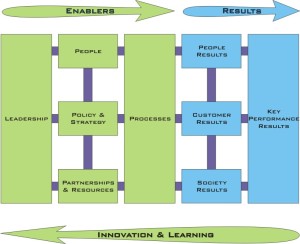International Economic Environment
This report is an analysis of operating business in international environment. Having knowledge of the international business environment is of most importance for modern managers as all major business concerns are dealing worldwide for all types of business transactions and second thing is that almost all business are or desiring to be globalized. Hence a manager must have knowledge about these factors of international business environment.
Definition of International Economic Environment
One system all over the world which only used for the trade internationally among the developed and developing countries is called International Economic environment. It is a sub-field of economics that is concerned with environmental issues. Environmental economics is distinguished from ecological economics in that it emphasizes the economy as a subsystem of the ecosystem with its focus upon preserving natural capital. On the other hand, International Economic Environment means the environment in different countries, with conditions similar to the home environment of the institutions, influencing decision-making on capabilities and resource use.
Terms of International Economic Environment
There are three terms to spread out all over the world of International Economic Environment. If any countries want to be world trader he must follow the three terms to be real international trader.
- The Law of One Price
There are also other two conditions must be satisfied before international economic exchanges can become beneficial for all involved. The sustainability of ecosystems on which the global economy depends must be guaranteed. And the economic partners must be satisfied that the basis of exchange is equitable; relationships that are unequal and based on dominance of one kind or another are not a sound and durable basis for interdependence. For many developing countries, neither condition is met.
Elements of Economic Environment
The elements of International Economic Environment are more important. It has five elements. Every elements is described below,
Economic Conditions: – Economic Policies of a business unit are largely affected by the economic conditions of an economy. Any improvement in the economic conditions such as standard of living, purchasing power of public, demand and supply, distribution of income etc. largely affects the size of the market.
Business cycle is another economic condition that is very important for a business unit. Business Cycle has 5 different stages viz. (i) Prosperity, (ii) Boom, (iii) Decline, (iv) Depression, (v) Recovery.
Following are mainly included in Economic Conditions of a country:-
- Stages of Business Cycle
- National Income, Per Capita Income and Distribution of Income
III. Rate of Capital Formation
- Demand and Supply Trends
- Inflation Rate in the Economy
- Industrial Growth Rate, Exports Growth Rate
VII. Interest Rate prevailing in the Economy
VIII. Trends in Industrial Sickness
- Efficiency of Public and Private Sectors
- Growth of Primary and Secondary Capital Markets
- Size of Market
Types of International Economic Environment
It has two parts:
- Microeconomic Part
- Macroeconomic Part
Microeconomic part means focuses on the recent economic environment and the effect of location on business and performance. The Macroeconomic part means focus on the broader or spreader economic environment and the world economy as all in all.
International economics system
International economics is concerned with the effects upon economic activity of international differences in productive resources and consumer preferences and the international institutions that affect them. It seeks to explain the patterns and consequences of transactions and interactions between the inhabitants of different countries, including trade, investment and migration Such as:
Finance system: International finance system explains and researches the spread of money over the international financial markets, and the impacts of the exchange rates.
Trade System: Which studies products, goods, and services all over the world boundaries and it makes some policy to spread up its trading system.
Monetary Macroeconomics System: this factor research capital and macro flows all over the world.
Analysis of International Economic Environment
Economic Environment means the effect of the working on the business all over the world. It studies trade system, policies, structure, and nature of an economy, level of income, distribution of income and wealth etc. The economic environment explains the economic conditions of any countries where the international organization operates. The features of economic environment are related to the all economic activities effects. The roles of international economic environment are increasing gradually day by day. Cause it has various types of system which are explained above the report. It has many organizations like World Bank, WTO, and UN etc.
We can accurately grasp the characteristics of international marketing environment, determine whether the enterprise market opportunities, can select the appropriate target market, can develop the appropriate marketing mix strategy. In other words, the correct assessment of the international marketing environment, to conduct international business success is the basis for marketing activities. Generally, the larger impact of international marketing activities is mainly economic, political, legal and cultural environment. Enterprises to enter the market of a country, we must first analyze the country’s economic environment. A country’s economy through the market size and economic characteristics of the two factors are reflected in relatively prepared.
Characteristics of the international economic environment
International economics environment is worldwide sector. It has some own characteristics which help anyone to fine out the conditions, rising and declining of economy of any countries of the world. It helps them to find out the lickings of their economic system. International economic environment play role of its system into every country. It has own Trade Centre, like WTO. Annually it presses its growth and declining reports. Some bindings are given to those countries. All business sectors services are provide to that country.
Importance of Economic environment
The most general and important consequence is that we naturally and automatically give priority to the economy (the household of man and part of the socio-economic environment) over ecology (the household of our planet, which constitutes the natural environment), when it should be obvious (were we not blinded by our familiarity with and dependency on the status quo) that for medium and long-term human survival it has to be the other way around. Day by day the importance of the economic environment is increasing.
Challenges of International economic environment
A related characteristic of market economies that is relevant to managers concerns the nature of property ownership. There are two pure types-complete privet ownership and complete public ownership.
Nowadays there are many challenges to overcome all obstacle of developing world economy. But there are four challenges go ahead as a main features. Four challenges are now main factor for us.
China Economy: In this ultra-modern world, Chine is the big fact. Socialist, Scientist, researches that next era China overcomes USA and European economy.
Politicization of global economy: Politics is the main factor nowadays. Now every country is violated by political violence all over the world. Everyone wants to become higher than another one. So these types of economy are the challenges for the modern economic environment.
Poverty, inequality and insufficiency: Almost all over the many countries are live under the poverty line. There have no proper system and capital to improve them. However, inequality and insufficiency of the products and working system they are not developed. So, it is the challenges for it.
Greenhouse effect: Greenhouse effect is now an n important discussion all over the world. Economic environment is totally effected by this. So it is the fact.

Theme of global business environment
Shift in the locus of power from North to South
The locus of global economic, political, and demographic power has been shifting from the Global North (broadly speaking, developed countries) to the Global South (developing countries). Although this shift has been taking place for decades, the new intensity with which it is occurring and the changing implications that it has for business will shape the global business environment in the coming years.
For businesses, supply chain structures are less likely to follow the “make in developing, sell in developed” paradigm. Additionally, in a globalized talent pool, educated workers are coming from new places, so companies must raise the bar or get left behind. Furthermore, the entrance of new competitors means that some threats may not even be on the radar.
New models of consumer engagement
With ubiquitous connectivity, universal access to knowledge, and an increasingly global consumer environment, companies are being forced to redefine how they engage with consumers. These trends can be double-edged swords. Connectivity in social media, online mobility, mobile payments, and augmented reality offer new ways to market products and services to consumers, but they also add complexity and competition. Access to knowledge and broader globalization can create consumer opportunities, but the former creates intense price pressures, and the latter can cause organizational complexity—both of which combine to squeeze profitability.
Many companies are already at the forefront of engaging the new consumer, while others are still lagging behind, or worse, attempting to shoehorn outmoded concepts for consumer engagement into electronic avenues. Companies can gain an immediate advantage with the following strategies:
Invest in electronic and social media-based consumer engagement. This applies not only to consumer products companies and retailers but also to businesses in other industries.
New paradigms, changing business models, and constant innovation
From research and development (R&D) and consumer engagement to product design, manufacturing, and corporate governance, the paradigms that have defined business are changing. Technology-enabled global operations transformed R&D functions during the information technology revolution; now, educational achievements in developing countries and aging populations in established markets are changing them again. Technological advances on the horizon, such as three-dimensional printing, will change established manufacturing methods just as computer-aided design and automation did 20 years ago.
Redefinition of the social contract
In both developed and developing countries, citizens are demanding more from their governments, and governments are facing challenges in meeting their needs. The events in the Middle East illustrate citizens demanding greater representation and accountability from their governments, enabled by ever-present connectivity. The forms of government that are—or were in place are proving to be unequal to the task. In the developed world, constituents are insisting on more protection from various forms of volatility, be it economic, health, or security. Governments in these countries, however, are constrained by rising debt, changing global governance models, and a talent deficit. Some countries, such as China, are struggling with both sets of problems. As governments worldwide face new demands and new constraints, a wholesale reevaluation of the social contract is taking place.
The global war for talent
Changing global demographics combined with governments’ disparate ability to invest in education have caused a shift in the composition of global talent. Talent is increasingly located in developing markets, both in numbers (younger, growing populations) and in skill sets (more university degrees, especially in science and engineering). The global recession has accelerated this trend, with many developed countries reporting a reverse brain drain—highly skilled emigrants leaving their host countries to return home, where capital is more plentiful and growth rates higher, to find work or start businesses.
At the same time, technology has made global collaboration more prevalent, and changing business models and business needs have made knowledge workers more valuable. Product cycles are becoming shorter and technological competition more intense, placing greater pressure on companies to keep pace by identifying and cultivating the best minds.
The result of these new and accelerating trends is a global war for talent that will determine which companies—and governments—are able to innovate and prosper and which ones will simply follow.
This situation presents risks and opportunities. Highly networked companies are able to take advantage of a growing pool of global talent and, by doing so, raise the bar for their competitors, including the less well-networked. This heightened level of competition means that all companies, including today’s innovators, need to be alert to changes in the competitive landscape for talent. In addition to locating and connecting with the most talented people, companies will face greater pressure to retain the most talented employees. Retention mechanisms and core human resources skills will become increasingly important to keeping high-value, high-performing workers. The policies of various geographic locations will have to be scrutinized to choose countries that offer fewer restrictions on the migration of highly skilled workers.
Risk of International Business
In every sector risk is compulsory. Then no one stay behind the sector although he knows it is not good. In the international economic environment sector also have many risk. Most of the important risk is included below. To develop in this sector you should mind it.
- Operational Risk
- Political Risk
- Technological Risk
- Economic Risk
- Financial Risk
- Terrorism Risk
- Strategic Risk
- Planning Risk
- Social Risk
Important of Studying International Economic Environment
By studying following gaudiness, everyone will be able to know what the main factor of International Economic Environment is. Without it no one can find out which countries are poor or rich. Following are the importance and objectives of studying International Economic Environment:
- Increasing awareness of the one country political policies and economic system.
- Learning the system of improving relation through appropriate communication.
- Identifying the other developed countries economic policy.
Changing the Economic Market
The future of any institution depends on its law, rules and regulations and depending on economic, social and technological sector. Whether it’s emerging markets like China or Brazil impacting sales and production, demographical situations changing buyer’s behavior and challenging service models, companies need to adapt to turn threats and challenges into opportunities. Under this plan, the economic impact has to be estimated by the regulator. Usually this is done using cost-benefit analysis. There is a growing realization that regulations (also known as “command and control” instruments) are not as distinct from economic instruments as is commonly asserted by proponents of environmental economics. E.g.1 regulations are enforced by fines, which operate as a form of tax if pollution rises above the threshold prescribed. E.g.2 pollution must be monitored and laws enforced, whether under a pollution tax regime or a regulatory regime. The main difference an environmental economist would argue exists between the two methods, however, is the total cost of the regulation.
Relationship to other fields
Environmental economics is related to ecological economics but there are differences. Most environmental economists have been trained as economists. They apply the tools of economics to address environmental problems, many of which are related to so-called market failures—circumstances wherein the “invisible hand” of economics is unreliable. Most ecological economists have been trained as ecologists, but have expanded the scope of their work to consider the impacts of humans and their economic activity on ecological systems and services, and vice-versa. This field takes as its premise that economics is a strict subfield of ecology. Ecological economics is sometimes described as taking a more pluralistic approach to environmental problems and focuses more explicitly on long-term environmental sustainability and issues of scale.
Environmental economics is viewed as more pragmatic in a price system; ecological economics as more idealistic in its attempts not to use money as a primary arbiter of decisions. These two groups of specialists sometimes have conflicting views which may be traced to the different philosophical underpinnings.
Another context in which externalities apply is when globalization permits one player in a market who is unconcerned with biodiversity to undercut prices of another who is – creating a race to the bottom in regulations and conservation. This in turn may cause loss of natural capital with consequent erosion, water purity problems, diseases, desertification, and other outcomes which are not efficient in an economic sense. This concern is related to the subfield of sustainable development and its political relation, the anti-globalization movement.
Environmental economics was once distinct from resource economics. Natural resource economics as a subfield began when the main concern of researchers was the optimal commercial exploitation of natural resource stocks. But resource managers and policy-makers eventually began to pay attention to the broader importance of natural resources (e.g. values of fish and trees beyond just their commercial exploitation; externalities associated with mining). It is now difficult to distinguish “environmental” and “natural resource” economics as separate fields as the two became associated with sustainability. Many of the more radical green economists split off to work on an alternate political economy.
Environmental economics was a major influence for the theories of natural capitalism and environmental finance, which could be said to be two sub-branches of environmental economics concerned with resource conservation in production, and the value of biodiversity to humans, respectively.
Conclusion
The International Economic Environment is now an important demand for every country to make up them as a development country in the world. The article considers culture, religions of people from various countries, traditions, customs, which from the multicultural environment of international economic activity. Every manager should have through understanding of International Economic environment, only then he can drive the organization to the path of success. All over the world, all countries differ in conditions of: Stage of economic development, economic environment etc.
10. References
- Balasubramanian, Arun: Towards a Philosophy of Environmental Education Regional Institute of Higher Education and Development, Singapore.
- Sankar, S.: Environmental Economics, Margham Publications, Chennai. P. 7.
- Karpagam, M.: Environmental Economics, Sterling Publishers Pvt. Ltd., New Delhi-20. P-5
- Robert N. Stavins: “environmental economics,” The New Palgrave Dictionary of Economics, 2nd Edition. Abstract & article.
- UNEP: Guidelines for Conducting Economic Valuation of Coastal Ecosystem Goods and Services


